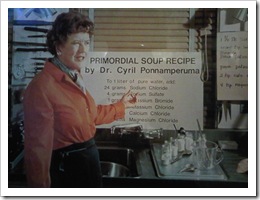I frustrate people when I give cooking classes. They want measures. They want me to tell them what to do. Cooking isn’t like that. Cooking is about flavor, it’s about texture, it’s about the experience. It’s not about tablespoons or grams or whether something is prepared at exactly 375 for 20 minutes.So when your grandmother gives you her coveted, top-secret recipe for baked boiled squirrel al fresco, it will never taste the same as hers… if you follow the recipe. Because your grandmother doesn’t use the recipe, either.Whether it is soy sauce or olive oil or even something as universal as sea salt, a tablespoon from one producer will be very different from another.Just consider the variation among beef:
USDA select (3rd grade) corn-fed beef from a grocery store that has likely been plumped with water;
aged, organic, Choice steak (2nd grade) from a natural food market like Whole Foods or Choices;
a Prime steak (1st grade) from a quality butcher; and
a super-select Wagyu steak.
All will have flavor profiles and textures that vary wildly. The worst cut of Wagyu will be light years better than even the best cut of choice. So why would you ever expect food to taste the same from mere measurements?Just recently, I picked up a great looking piece of meat at Whole Foods. I decided I wanted to make pot roast in our slow cooker, which I’ve not used in years. I dug it out of storage, cleaned it up, and went to work on the pot roast.My wife Vivian asked what recipe I’d be using. I looked at her perplexed. What recipe? I simply couldn’t fathom using a recipe. I wanted pot roast. Granted, I’ve never actually prepared a pot roast. But that was besides the point.Later that evening we had pot roast, and it was quite good. Did I use a recipe?No.I used 12 recipes.The miracle of the Internet means that I don’t have to consult a book and choose one person’s vision of a particular type of food. I can now get 5, 10, even 100 versions of the same dish and see what is the same, what differs, what makes some unique. I learn about what Pot Roast is…not what one person says it is. Then I can begin to cook. I know what types of ingredients I need, what ingredients I have on hand, and what the flavor is I’m shooting for.Recipes end up being like “best practices.” In business, when a company encounters a problem, they often look for a set series of prescriptive, easily to follow steps that have solved that same problem elsewhere. The clincher here is that most problems are unique.Like ingredients, people are all different. We interact differently, we deal with change differently. Best practices are often followed as rote guides, and then fail.Why?Because we followed the recipe, but we didn’t actually cook.We follow what other people say will work, but we don’t find out what the gestalt is of what it is that we are making. We focus on instructions and not on actual goals.To truly solve problems, we need to be creative. We need to understand the various whys of a problem and then devise solutions. Otherwise we are merely treating symptoms.Remember, when working with visual controls like Personal Kanban or management processes your goals and the system you have employed to realize them are what’s important. The idea is not to become a slave to your board. Whether it is building software, finishing a report at work, teaching your daughter the alphabet, or creating a perfect pot roast - other people can offer advice, but you are the chef.









